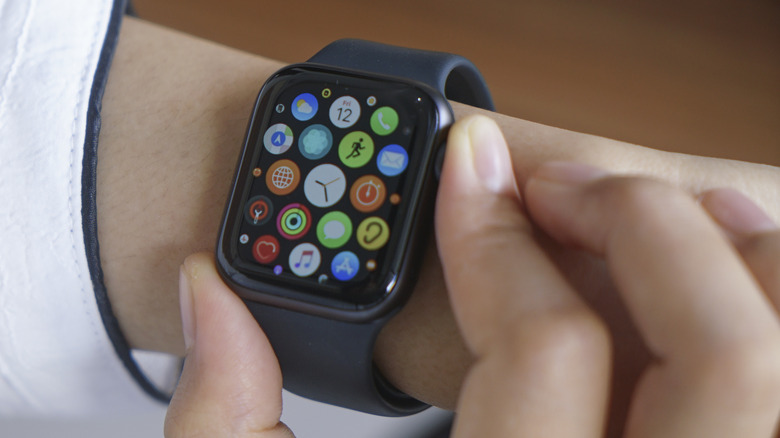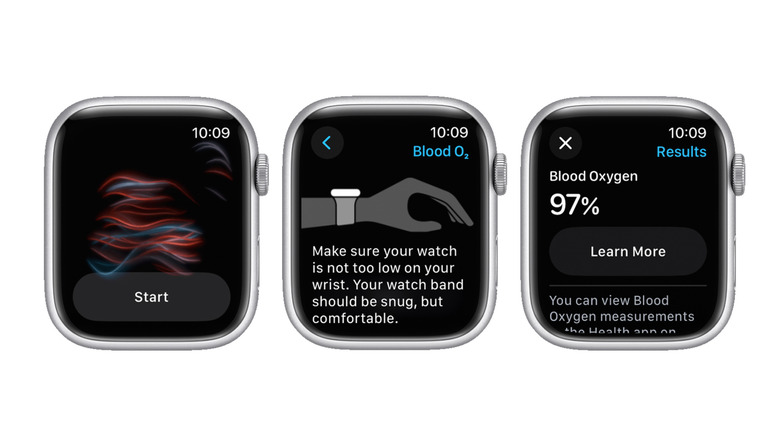How To Track Your Blood Oxygen Level On An Apple Watch
Monitoring your blood oxygen levels may not seem as exciting as step counting or be as obvious in its benefits as something like sleep tracking, but it's still a useful option for managing your health with an Apple Watch. Just think of it as one more metric you can keep an eye on to make sure the organic mech suit your brain is piloting is operating smoothly.
Generally you want the amount of oxygen in your blood to sit at around 95% and up, as it's a good sign that your lungs are doing a good job of supplying this precious element to your body's other systems. Readings below a 95 could be an indicator of pushing yourself too hard during a workout, possible respiratory problems, or absolutely nothing because by Apple's own admission the watch feature isn't intended (read: reliably accurate enough) for medical purposes.
Should you want to make use of blood oxygen monitoring for non-medical purposes, though, that's definitely something you can do with your Apple Watch — regardless of December 2023's pulse oximeter debacle. As long as you have an Apple Watch Series 6 and newer (or any model of Apple Watch Ultra) and an iPhone 6s and later with the most recent version of iOS installed, you're good to go.
Tracking your blood oxygen
Assuming you have the necessary hardware, and live in a region where the feature is currently available, getting set up is a breeze.
- Open the Health app on your iPhone and select the Browse tab.
- Tap the Respiratory option and then choose Blood Oxygen. Tap the Enable button at the bottom of the pop-up when it appears.
- This process will put the Blood Oxygen app on your Apple Watch, which you'll be able to access like other watch apps.
- If the Blood Oxygen app doesn't show up on your Apple Watch, you'll have to visit the App Store on your watch and download it manually.
- To use the feature, open the Blood Oxygen app on your Apple Watch while the watch is on your wrist, making sure it's not too loose or too tight, and is positioned correctly with the back of the watch against the back of your wrist. It's best to remain relatively still, and keep the watch face pointed up (towards the ceiling or sky).
- Tap the Start button and hold your arm steady — ideally resting on a table or other sturdy surface — with your wrist and palm facing down until the test is complete. This should take about 15 seconds.
- When you've finished viewing the results, tap the X button to close.
You may receive inaccurate results due to cold temperatures, a high (over 150 bpm) heart rate, or bruises, tattoos, or other markings on your skin blocking the sensors.

